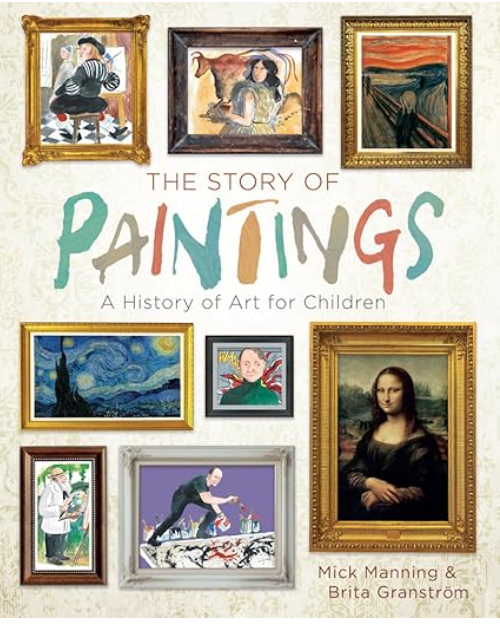A Disney Homeschool Study of Japan: Cultural Respect and Natural Wonder at EPCOT’s Japan Pavilion
We use cultural studies as a way to build empathy, encourage curiosity, and foster a global mindset. Japan offers a unique opportunity to explore deep themes like honor, nature, remembrance, and beauty.
This Disney homeschool study uses the Ultimate EPCOT Workbook, a few treasured books, and a visit to EPCOT’s Japan Pavilion to explore Japanese culture through hands-on activities, storytelling, nature appreciation, and art. From bowing customs to the symbolism of the number seven, this cultural study connects traditions to real-life learning in a memorable and meaningful way.
Lesson 1: The Art of Bowing – Respect in Everyday Life
We began our study with the concept of respect: a cornerstone of Japanese culture. Using the "Art of Bowing" page from the Ultimate EPCOT Workbook, my daughter explored the different types of bows used in Japan: the casual bow among friends, the deeper bow to show apology or gratitude, and the formal bow used in ceremonies.
We practiced bowing to one another and talked about how body language communicates respect, even without words. This simple activity helped us reflect on how we show respect in our own home and how cultures shape behavior in different ways.
Big Question: How do we show respect in different cultures, and what can we learn from the Japanese custom of bowing?
Lesson 2: The Story of Orihime and Hikoboshi – Love, Duty, and the Number Seven
From A Year Full of Stories by Angela McAllister (I use this book a LOT), we read the poignant Japanese folktale of Orihime, the weaving maiden and daughter of the Sky King, who falls in love with a humble oxherd named Hikoboshi. Distracted by their love, they neglect their duties, and as a result, the Sky King separates them by the Milky Way. They are allowed to meet only once per year: on the seventh day of the seventh lunar month. This day is now celebrated as Tanabata, or the Star Festival, throughout Japan.
This story brought us to a big question and more research: why is seven such an important number?
The Cultural Significance of the Number Seven in Japan
The number seven (shichi in Japanese) is deeply embedded in Japanese beliefs, traditions, and rituals. It appears across multiple aspects of life (spiritual, cultural, and seasonal) and is often associated with luck, cycles, and connections to the natural and spiritual worlds.
Here are a few examples that we found:
Seven Lucky Gods: A group of deities in Japanese folklore who bring good fortune and happiness.
Festival of the Seven Herbs: A celebration on January 7 to promote health through a special herbal rice porridge (with seven herbs).
Shichi-Go-San (Seven-Five-Three Festival): A rite of passage celebrated on November 15 for children aged 3, 5, and 7.
Buddhist Mourning Rituals: Traditionally, memorial services are held every 7 days for 49 days after a death (7 weeks of 7 days).
Tanabata Festival: Celebrated on 7/7, reinforcing the idea of fate, longing, and reunion through the number seven (this festival directly connects to the folklore we read).
In many ways, we found that seven acts as a spiritual rhythm in Japanese life: a symbol of transition, blessing, and renewal.
This whole discovery process was a conversation with my daughter, and in that way felt more like a natural discovery instead of a formal lesson with note-taking.
Big Question: Why do you think certain numbers become meaningful across a culture?
Lesson 3: O-Bon and the Day of the Dead – Honoring Ancestors Across Cultures
From All About Japan, we learned about O-Bon, the Japanese Festival of Souls. My daughter was fascinated by the tradition of lighting lanterns to guide ancestors’ spirits, especially because we had just rewatched Coco a few nights prior.
To deepen the learning, we compared O-Bon with Día de los Muertos in Mexico. We used this free printable Venn diagram to compare traditions, symbols, foods, and values. Both cultures emphasize honoring loved ones who have passed, but express that reverence in different ways.
Big Question: Why do you think so many cultures have special ways of remembering those who came before us?
Lesson 4: Mount Fuji, Shrines, and the Spirit of Nature
Turning to DK Eyewitness: Wonders of the World, (we also use this book frequently) we learned about Mount Fuji, one of Japan’s most iconic landmarks and an active volcano. We discussed Japan’s location on the Ring of Fire and how volcanic activity has shaped both the land and the culture.
We also explored Shinto beliefs, especially the idea that nature is alive with spiritual energy. Shrines, like the one in EPCOT’s Japan Pavilion, are often dedicated to kami - nature spirits that live in trees, mountains, water, and even wind.
Using the Ultimate EPCOT Workbook, we practiced writing nature-related kanji and reflected on how reverence for nature can influence daily life.
Big Question: Why do you think nature is treated as sacred in many parts of Japanese culture?
Lesson 5: Art and the Sea – Hokusai’s Great Wave
We concluded our study with art. Using The Story of Paintings: A History of Art for Children, we explored the work of Katsushika Hokusai, especially The Great Wave off Kanagawa. My daughter observed how Hokusai used line and movement to create a powerful emotion, showing the sea as both beautiful and overwhelming.
We connected this to Japan’s geography: a country surrounded by water, often affected by typhoons, tsunamis, and volcanic eruptions. We started to see nature as not just scenery in Japanese art. It started to take on a character of its own, like it had a voice.
(Later, at EPCOT’s Bijutsu-kan Gallery, we looked at modern Japanese pop art and discussed how art evolves but continues to reflect cultural values.)
Big Question: How do artists express nature differently in different time periods?
EPCOT Field Visit: Bringing It All Together
Our unit concluded with a trip to EPCOT’s Japan Pavilion. We took time to:
On July 7th, you can observe the bamboo Tanabata tree (guests can write wishes as cast members celebrate Tanabata at Mitsukoshi)
Find the Tenge structure and koi ponds in the Japanese gardens,
Visit the shrine gate and talk about its meaning as an entrance to sacred space,
Sample Japanese candy from Mitsukoshi Department Store,
Practice what we learned by bowing to the Cast Members to say thank you after making a purchase - an authentic, respectful way to close our study on cultural greetings.
We talked about how the stories, art, and traditions helped her understand Japanese values of honor, remembrance, and connection with nature.
Final Reflections: Deep Thinking from Little Learners
This unit showed us how stories, art, festivals, and traditions are all connected, and how they help shape a culture’s identity. Japan values honor and respect, remembers its ancestors with joy and reverence, and sees nature as a teacher and guide.
Big Final Question:
How can we live with more respect - for people, for stories, and for the natural world around us?
Book List and Resources
The Ultimate EPCOT Workbook (homeschool printable)
A Year Full of Stories by Angela McAllister
All About Japan by Willamarie Moore
Other Blog Posts You May Enjoy
Homeschooling at EPCOT’s Mexico Pavilion
The Imagineer Mindset: Modeling Critical Thinking Skills
The Best Educational Shows on Disney+














